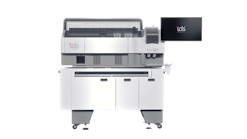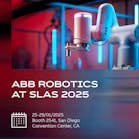Are clinical analyzers a career road block or an opportunity for new skills?
As diagnostic analyzers evolve and improve, they are achieving higher workloads in a shorter amount of time and reducing labor requirements. Typically an analyzer is viewed as a piece of automated equipment that performs tasks usually completed by laboratory personnel. In some areas of the lab, analyzers have been available for a long time, while in other areas the option for automated equipment is still new. In either case, when adopting new equipment the same question exists: how will automation affect your skilled laboratory personnel?
The introduction of new automated equipment into the lab can be concerning to lab personnel if they view it as a threat to their expertise. Conversely, it may be viewed as an opportunity—a way to relieve pressures and increase productivity. Regardless, demands on the laboratory continue to grow. Expanding test menus and increasing order volumes clash with a reduction in reimbursement and budget. Additionally, many labs are affected by shortages of experienced medical technologists, so skilled personnel can become stretched and are offered fewer opportunities to use their skills. Essentially, labs are being asked to do more with less.
Analyzers impact labor
Many of the new or improved features on analyzers are designed to reduce the reliance on human interaction. The intention is to decrease labor time and facilitate faster, more consistent outcomes. For example, an analyzer with shorter turnaround time provides results sooner and can free up more time for techs to do other things. Menu consolidation could mean fewer instruments are needed, which in turn reduces the labor requirements for maintaining these systems. Features such as auto-dilution, auto-reconstitution, and auto-rerun reduce the hands-on time for technologists and increase walkaway time.
Julie Navales, a Clinical Lab Scientist at a hospital in San Diego, CA, looks to analyzers to provide walk away automation and time savings. Her lab is short staffed so she needs the time that analyzers free up to perform other mandatory activities such as maintenance and quality control (QC). Also, a well-designed user interface makes training new hires easier and quicker.
Some new equipment, such as the automated line in clinical chemistry or the new automation found in some microbiology sections, can dramatically reduce labor requirements. New analyzers in areas such as enzyme-linked immunosorbent assay and mass spectrometry provide greater capacity and throughput while significantly reducing hands-on labor time. For some areas of the core lab, improved on-board stability and reagent management reduce instrument start-up and hands-on maintenance time for technologists. In these scenarios laboratory personnel can spend less time on repetitive tasks and more time focusing on result interpretation and quality requirements.
Other times the labor impact from new analyzers may not be immediately visible. Features such as simpler daily maintenance, improved reagent handling, or reduced hands-on time may save just minutes here and there for the tech. But the impact of these savings should not be underestimated; these minutes add up throughout the day and the total labor reductions can be significant.
New opportunities
It is common to hear that reduced labor requirements will lead to cost savings. It could be assumed that this is due to job losses. However, fewer labor demands do not necessarily mean reduced personnel. In fact, this presents an opportunity to rebalance the lab workflow and better utilize skilled labor. Many laboratory managers and technologists share the view that additional time gained by automating processes can be well spent on other tasks around the lab. They would like to focus on providing more training to new personnel, spending more time validating new tests, continuing education, learning new skills, or spending more time learning about the instruments.
Kimberly Pacella, Director of Clinical Operations, Specialty Labs, Health Network Labs, located throughout Pennsylvania says, “New analyzers are a great opportunity for new skills.” She recently added new analyzers in multiple departments of her lab. She comments, “Sometimes the techs are resistant to change, but they embrace it when they see the benefits, which include the speed at which the tests are completed. They can now do in 6 hours what previously took a full 8-hour shift.” Kim continues, “With less hands-on time, the techs can spend more time on QC. With the time freed up by automation, they can focus on what they are trained to do: critically thinking about the results.”
Leveraging outcomes
New analyzers provide the lab an opportunity to review their labor requirements and adjust schedules and assignments to better optimize their practices. Even if the routine workflow does not change significantly with a new analyzer, the time requirements for start-up, maintenance, and reagent management should be reduced. It is important to adjust to these changes and embrace the opportunity for skilled personnel to be utilized appropriately.
For example, one large core lab in the U.S. has developed a new “validation work cell” model. Here the techs are not expected to stay in front of the analyzers. Instead they focus on critical results at a dedicated bank of LIS terminals while lab assistants load and unload the instruments. This example of a new, creative solution could be applied to other labs and used to address a variety of workflow or quality concerns.
Lab administrators have an opportunity to adapt their lab to take full advantage of new technologies. What worked well in the past may not be what is best now. When a lab brings in new analyzers, the first priority is often to focus attention on learning the system and achieving reportable results. But the impact does not need to stop there. New analyzers are also an opportunity to improve the entire workflow of the laboratory and to rethink how the most gain can be realized from all the lab’s resources.
Conclusion
Analyzers continue to evolve and improve, enabling labs to complete more work with fewer manual requirements. As the workload increases, automated equipment continues to help the lab meet demands and maintain high levels of quality and service. Implementing a new analyzer may initially create some uncertainty, but laboratory personnel should embrace technological evolution. Instead of a threat, new automation should be viewed as an opportunity to enhance lab work and win back valuable time to address other necessary activities.
As we move into the future, labs will likely continue to see an increase in demand and an unmatched decrease in resources. As such, automation will play an ever increasing role in the success of a lab. Lab managers must continue to adapt and evolve their lab practices to ensure they maintain both productivity and quality, including optimal utility of their skilled lab personnel. Automation provides new opportunities to the lab as a whole and to all the personnel within.





